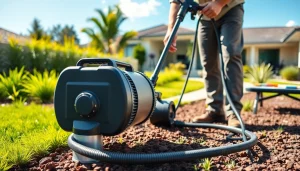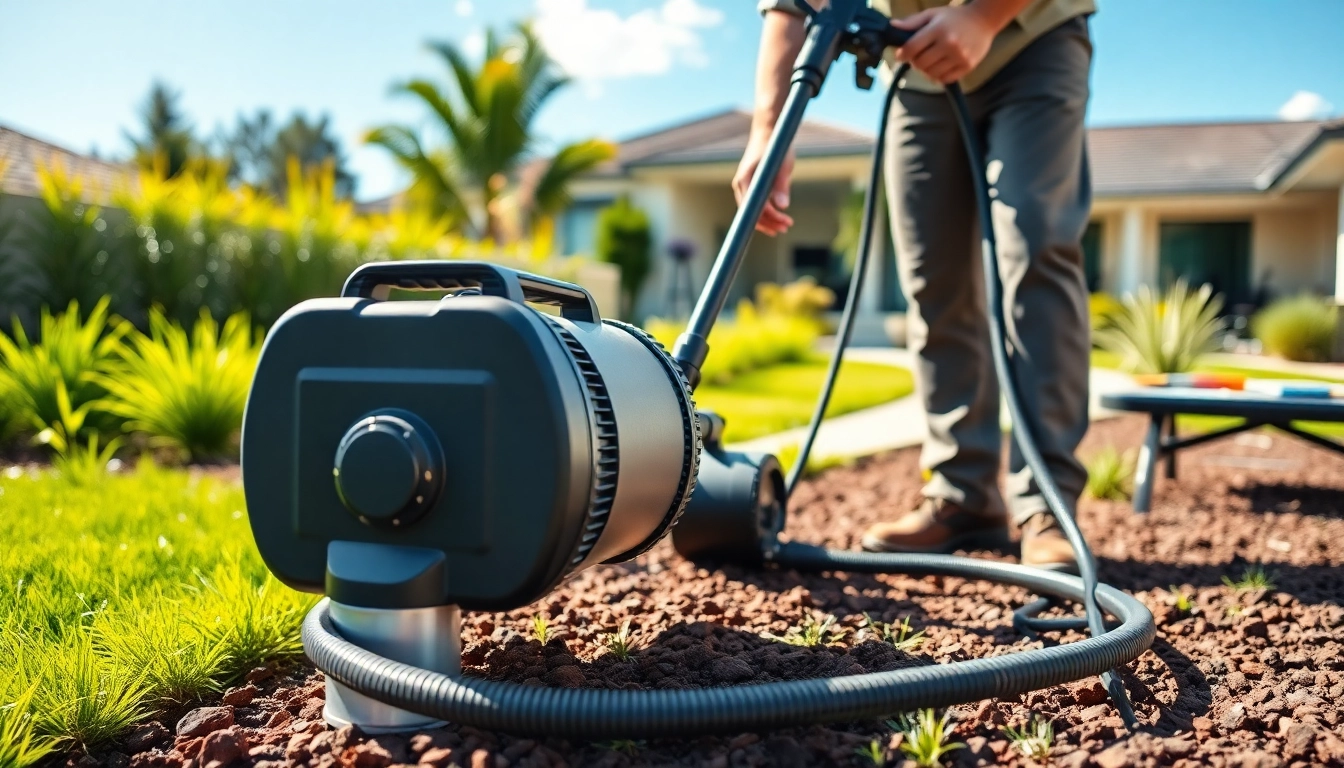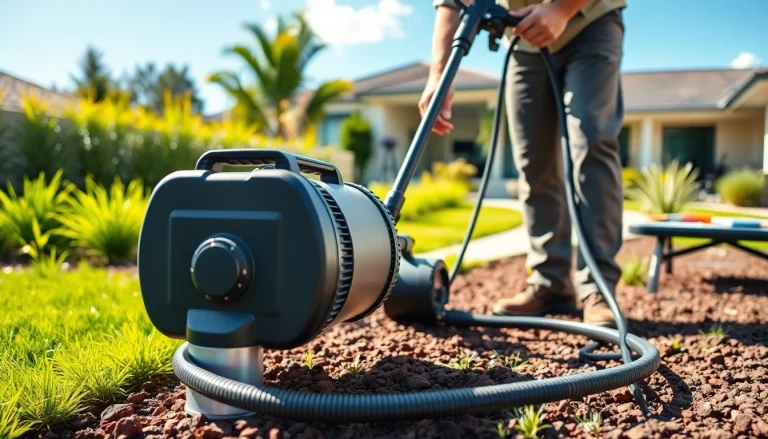Understanding Termite Reticulation Systems
What is a Termite Reticulation System?
A termite reticulation system is an underground network of pipes designed to deliver liquid termiticides and other pest control treatments around the foundation of a property. This system provides consistent and targeted application of chemical barriers to prevent termite infestations. Installed during construction or as part of a preventive pest management strategy, these systems are an effective solution for homeowners seeking long-term protection against termites.
How Termite Reticulation Systems Work
The basic operation of a termite reticulation system involves the installation of a series of interconnected pipes that encircle the building’s perimeter. These pipes are strategically placed at various depths and intervals to ensure even distribution of the chemical treatment. When it is time to refill the system, a qualified technician can easily access the pipes via designated access points. Through these points, the technician injects the termiticide, replenishing the protective barrier that deters termites from entering the property.
Benefits of Using a Termite Reticulation System
- Long-lasting Protection: One of the principal advantages of a termite reticulation system is its ability to provide long-lasting management of termite threats. The chemicals used can last several years if properly maintained and refilled.
- Targeted and Efficient: These systems allow for precise applications of termiticides, minimizing the amount needed and reducing environmental impact.
- Less Disruption: Installing a reticulation system typically involves less disturbance to the property compared to traditional methods, ensuring that homeowners can maintain their living environment with minimal interruption.
- Regular Maintenance: The structured nature of the system facilitates regular inspections and preventative maintenance, thereby enhancing effectiveness over time.
Importance of Termite Reticulation System Refills
Why Regular Refills are Necessary
Just like any effective pest control measure, a termite reticulation system requires regular refills to maintain its efficacy. Depending on various factors, including the type of chemical used, exposure to the elements, and environmental conditions, these refills are typically necessary every 3 to 8 years. Regular refilling ensures that the chemical barrier remains potent and capable of warding off potential infestations. Skipping this maintenance can leave the property vulnerable, significantly increasing the risk of termite damage, which can carry extensive repair costs.
Signs that Your System Needs Refilling
Recognizing when your termite reticulation system needs a refill is crucial in preventing infestations. Common indicators include:
- Visible signs of termite activity, such as mud tubes or wood damage.
- Significant weather changes that may have impacted the chemical barrier, such as heavy rains or flooding.
- Outdated maintenance records indicating that a refill has not occurred within the recommended time frame.
Common Mistakes to Avoid with Refills
As with any home maintenance task, avoiding common pitfalls can lead to better outcomes:
- Neglecting Scheduled Refills: Putting off regular refills can negate the protective benefits of the system and leave your home vulnerable.
- Using Inadequate Chemicals: Not all chemicals provide the same level of protection. Always consult with professionals for the best options suited for your specific area.
- Improper Access Point Use: Attempting to refill the system without appropriate knowledge can damage the infrastructure. Always consult professionals when in doubt.
How to Refill Your Termite Reticulation System
Step-by-Step Refilling Process
Refilling a termite reticulation system is a process best handled by trained professionals. However, for informational purposes, here are typical steps involved:
- Survey the System: Identify the access points and inspect the condition of the system.
- Prepare Equipment: Gather necessary tools and chemicals prescribed by pest control manufacturers.
- Open Access Points: Carefully remove the covers of the access points to ensure a tight seal for future use.
- Inject Chemicals: Use specialized equipment to inject the termiticides into the system.
- Secure Access Points: Replace and seal the access points to ensure the system remains airtight.
- Documentation: Record the date of refill and type of chemical used for future reference.
Required Tools and Equipment
The tools and equipment necessary for a refill include:
- Access point tools (wrench/screwdriver)
- Pressure tank for chemical application
- Protective gear including gloves and masks
- Documentation forms to track chemical types and refill dates
Hiring a Professional vs. DIY
While some homeowners might consider a DIY approach to refilling their termite reticulation systems, it is important to weigh the benefits of hiring a professional. Professionals have the training and experience necessary to ensure that the chemicals are applied correctly and efficiently. Moreover, they understand the latest regulations and environmental considerations that may impact the choice of chemicals used. Investing in professional services can save time and ultimately prevent significant damage that could occur from improperly managed refills.
Costs Associated with Termite Reticulation System Refills
Understanding Refilling Costs
The costs associated with refilling a termite reticulation system can vary widely based on several factors, including location, size of the property, and type of chemicals used. Generally, you can expect to pay between $200 to $600 for a professional refill. It’s essential to get quotes from multiple service providers to ensure you receive a fair price.
Comparing Prices across Competitors
When assessing the costs for termite reticulation system refills, analyzing competitor pricing can provide valuable insights. For instance, some pest control companies may offer package deals or discounts for regular customers. Additionally, consider the reputation and experience of the service provider alongside their pricing to ensure you are receiving quality service. Websites like termite reticulation system refills may also showcase promotions or customer reviews that can guide your decision-making process.
Long-term Savings from Proper Maintenance
Investing in proper maintenance, including regular refills of your termite reticulation system, can lead to substantial long-term savings. By preventing termite infestations, homeowners can avoid repair costs that can escalate into the thousands. Furthermore, the peace of mind that comes with knowing your property is protected cannot be understated. Long-term savings through preventive measures will ultimately outweigh the costs of maintaining your system.
Best Practices for Termite Reticulation Systems
Integrating Regular Maintenance Checks
Developing a routine maintenance schedule for your termite reticulation system is crucial. Regular inspections—preferably annually—can help identify any potential issues early on and ensure that your system functions correctly. During these checks, look for wear and tear, ensure access points are sealed properly, and confirm that there are no blockages in the pipes.
Optimizing Performance of Your System
To enhance the effectiveness of your termite reticulation system, consider integrating additional protective measures. Keeping landscaping away from the home’s perimeter, ensuring proper drainage around the foundation, and regularly monitoring humidity levels can create an unwelcoming environment for termites. The integration of physical barriers, like steel mesh, can also add another layer of protection.
Innovations in Termite Reticulation Technology
As pest control technology evolves, innovative advancements are being made in termite reticulation systems. Enhanced delivery methods, improved resin protection, and biologically-based chemicals offer options that are not only more effective but also environmentally friendly. Keeping abreast of these innovations can help homeowners stay ahead in pest management and make informed choices regarding their termite protection strategies.


















+ There are no comments
Add yours